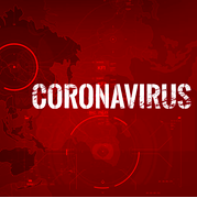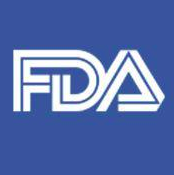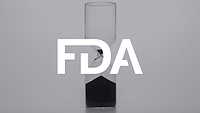FDA Conference Call Answers Food Industry Questions about COVID-19

Q: Is the U.S. food supply safe?
Currently there is no evidence of food or food packaging being associated with transmission of COVID-19.
Unlike foodborne gastrointestinal (GI) viruses like norovirus and hepatitis A that often make people ill through contaminated food, SARS-CoV-2, which causes COVID-19, is a virus that causes respiratory illness. Foodborne exposure to this virus is not known to be a route of transmission.
The virus is thought to spread mainly from person-to-person. This includes between people who are in close contact with one another (within about 6 feet), and through respiratory droplets produced when an infected person coughs or sneezes. These droplets can land in the mouths or noses of people who are nearby or possibly be inhaled into the lungs. It may be possible that a person can get COVID-19 by touching a surface or object that has the virus on it and then touching their mouth, nose, or possibly their eyes, but this is not thought to be the main way the virus spreads. However, it’s always critical to follow the 4 key steps of food safety—clean, separate, cook, and chill – to prevent foodborne illness.
Q: Will there be food shortages?
There are no nationwide shortages of food, although in some cases the inventory of certain foods at your grocery store might be temporarily low before stores can restock. Food production and manufacturing are widely dispersed throughout the United States and no widespread disruptions have been reported in the supply chain.
The U.S. Food and Drug Administration (FDA) is closely monitoring the food supply chain for any shortages in collaboration with industry and our federal and state partners. We are in regular contact with food manufacturers and grocery stores.
Q: Where should the food industry go for guidance about business operations?
Food facilities, like other work establishments, need to follow protocols set by local and state health departments, which may vary depending on the amount of community spread of COVID-19 in a particular area. We encourage coordination with local health officials for all businesses so that timely and accurate information can guide appropriate responses in each location where they have operations..
Q: A worker in my food processing facility/farm has tested positive for COVID-19. What steps do I need to take to ensure that the foods I produce are safe?
Coronaviruses are generally thought to be spread from person-to-person through respiratory droplets. Currently, there is no evidence to support transmission of COVID-19 by food. Unlike foodborne gastrointestinal (GI) viruses like norovirus and hepatitis A that often make people ill through contaminated food, SARS-CoV-2, which causes COVID-19, is a virus that causes respiratory illness. Foodborne exposure to this virus is not known to be a route of transmission.
If an employee is confirmed to have COVID-19, employers should inform fellow employees of their possible exposure to COVID-19 in the workplace but maintain confidentiality. Sick employees should follow the U.S. Centers for Disease Control and Prevention (CDC)'s What to do if you are sick with coronavirus disease 2019 (COVID-19). Employers should consult with the local health department for additional guidance.
While the primary responsibility in this instance is to take appropriate actions to protect other workers and people who might have come in contact with the ill employee, facilities should re-double their cleaning and sanitation efforts to control any risks that might be associated with workers who are ill regardless of the type of virus or bacteria. For example, facilities are required to maintain clean and sanitized facilities and food contact surfaces.
See: FSMA Final Rule for Preventive Controls for Human Food.
Food facilities are required to use Environmental Protection Agency (EPA)-registered “sanitizer” products in their cleaning and sanitizing practices.
In addition, there is a list of EPA-registered “disinfectant” products for COVID-19 on the Disinfectants for Use Against SARS-CoV-2 list that have qualified under EPA’s emerging viral pathogen program for use against SARS-CoV-2, the coronavirus that causes COVID-19.
IMPORTANT: Check the product label guidelines for if and where these disinfectant products are safe and recommended for use in food manufacturing areas or food establishments.
Q: Do I need to recall food products produced in the facility during the time that the worker was potentially shedding virus while working?
We do not anticipate that food products would need to be recalled or be withdrawn from the market because of COVID-19, as there is currently no evidence to support the transmission of COVID-19 associated with food or food packaging.
Additionally, facilities are required to control any risks that might be associated with workers who are ill regardless of the type of virus or bacteria. For example, facilities are required to maintain clean and sanitized facilities and food contact surfaces.
Q: If a worker in my food processing facility/farm has tested positive for COVID-19, Should I close the facility? If so, for how long?
Food facilities need to follow protocols set by local and state health departments, which may vary depending on the amount of community spread of COVID-19 in a given area. These decisions will be based on public health risk of person-to-person transmission – not based on food safety.
Q: How do I handle self-service food buffets such as salad bars in a retail setting related to COVID-19?
Restaurants and retail food establishments are regulated at the state and local level. State, local, and tribal regulators use the Food Code published by the FDA to develop or update their own food safety rules. Again, there is no current evidence to support the transmission of COVID-19 associated with food or food packaging.
It may be possible that a person can get COVID-19 by touching a surface or object that has the virus on it and then touching their mouth, nose, or possibly eyes, but this is not thought to be the main way the virus spreads. The coronavirus is mostly spread from one person to another through respiratory droplets. However, it’s always critical to follow the 4 key steps of food safety—clean, separate, cook, and chill—to prevent foodborne illness.
As an extra precaution to help avoid the transmission of COVID-19 through surface contact, we recommend frequent washing and sanitizing of all food contact surfaces and utensils. Food-service workers also must practice frequent hand washing and glove changes before and after preparing food. Include frequent cleaning and sanitizing of counters and condiment containers. Consumers should wash their hands after using serving utensils.
In communities with sustained transmission of COVID-19, state and local health authorities have implemented social-distancing measures which discourage or prohibit dining in congregate settings. We also recommend discontinuing self-service buffets and salad bars until these measures are lifted.
Unlike foodborne gastrointestinal (GI) viruses like norovirus and hepatitis A that often make people ill through contaminated food, SARS-CoV-2, which causes COVID-19, is a virus that causes respiratory illness. Foodborne exposure to this virus is not known to be a route of transmission.
Q: What steps do I need to take to clean the facility/equipment to prevent the spread of COVID-19?
FDA-regulated food manufacturers are required to follow Current Good Manufacturing Practices (CGMPs) and many have food safety plans that include a hazards analysis and risk-based preventive controls. CGMPs and food safety plans have requirements for maintaining clean and sanitized facilities and food contact surfaces. See: FSMA Final Rule for Preventive Controls for Human Food.
Food facilities are required to use EPA-registered “sanitizer” products in their cleaning and sanitizing practices.
In addition, there is a list of EPA-registered “disinfectant” products for COVID-19 on the Disinfectants for Use Against SARS-CoV-2 list that have qualified under EPA’s emerging viral pathogen program for use against SARS-CoV-2, the coronavirus that causes COVID-19.
IMPORTANT: Check the product label guidelines for if and where these disinfectant products are safe and recommended for use in food manufacturing areas or food establishments.
We encourage coordination with local health officials for all businesses so that timely and accurate information can guide appropriate responses in each location where their operations reside.
Food facilities may want to consider a more frequent cleaning schedule.
Q: Do I need to ask other workers who may have been exposed to a worker who tested positive for COVID-19 to self-quarantine for 14 days?
Employers need to follow guidelines set by state and local authorities. If an employee is confirmed to have COVID-19, employers should inform fellow employees of their possible exposure to COVID-19 in the workplace but maintain confidentiality. Sick employees should follow the CDC’s What to do if you are sick with coronavirus disease 2019 (COVID-19). Employers should consult with the local health department for additional guidance.
Q: What measures are FDA (and CDC, state partners, etc.) taking to ensure that we remain able to address foodborne illness outbreaks during the COVID-19 pandemic?
Unlike foodborne gastrointestinal (GI) viruses like norovirus and hepatitis A that often make people ill through contaminated food, SARS-CoV-2, which causes COVID-19, is a virus that causes respiratory, not gastrointestinal, illness. Foodborne exposure to this virus is not known to be a route of transmission.
With respect to foodborne pathogens, CDC, FDA, and U.S. Department of Agriculture Food Safety and Inspection Service continue to work with state and local partners to investigate foodborne illness and outbreaks. FDA’s Coordinated Outbreak Response and Evaluation (CORE) Network manages outbreak response, as well as surveillance and post-response activities related to incidents involving multiple illnesses linked to FDA-regulated human food products, including dietary supplements, and cosmetic products. During this coronavirus outbreak, CORE’s full-time staff will continue to operate to prepare for, coordinate and carry out response activities to incidents of foodborne illness.
FDA’s Center for Veterinary medicine manages outbreak response for animal food and is similarly staffed and prepared to respond to incidents of foodborne illness in animals.
CDC, FDA, FSIS and state and local public health partners are maintaining routine public health surveillance for infections and outbreaks that may be transmitted through foods. CDC continues to lead and coordinate investigations of multistate foodborne events, consults with states as needed on events within a single state, and works closely with FDA and FSIS investigators so that contaminated foods are traced back to their sources and controlled.
If you missed Wednesday's call, listen to the recording at FDA.gov.
Looking for a reprint of this article?
From high-res PDFs to custom plaques, order your copy today!





